
Für eine deutsche Übersetzung dieser Seite einfach die Brandenburger Flagge anklicken
 |
Click the Brandenburg Flag for a German translation
Für eine deutsche Übersetzung dieser Seite einfach die Brandenburger Flagge anklicken |


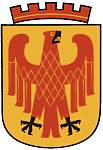
|
Home Towns - Potsdam, GermanyInternational Inspirations
|

|



 |
This site is part of our Potsdam, Germany site. Click the left turn sign to get back to the Potsdam Start Site. |

| Potsdam's architecture has a centuries-long history of foreign influences. As the town grew, this international ambience became Potsdam's indistinguishable trade mark, making every stroll through town look a journey around the world. Here are some examples of foreign influence from five continents, in chronological order. |


 |
1740 - Dutch Quarters, inspired by Herengracht, Amsterdam
 Between 1733 and 1740, King Frederick William I had Dutch architect Johann Boumann building 134 traditional Dutch houses to attract Dutch artisans to move to his residence. After the Netherlands were severly destroyed in world War II, Potsdam's Dutch Quarters became the largest conglomeration of traditional Dutch houses in Europe. |

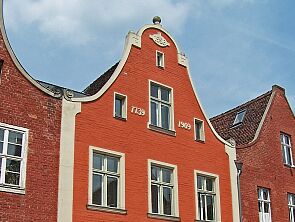
|
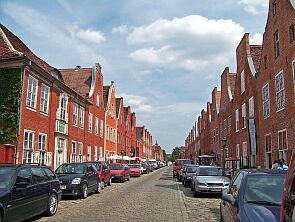
|
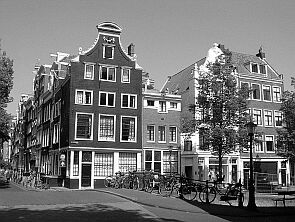
|
| Dutch Quarters, Potsdam | Herengracht, Amsterdam, The Netherlands |


 |
1747 - Obelisk Gate, inspired by Ancient Egyptian Monuments
 The Obelisk Gate was one of the first parts of Sanssouci Park, designed by architect von Knobelsdorff. While the hyroglyphs on the obelisk are pure fantasy, the obelisk as such is modeled after similar objects in Egypt. Today, there are a number of Egyptina-inspired monuments across the park, amongst them a group of Sphinxes at the southern entrance. |

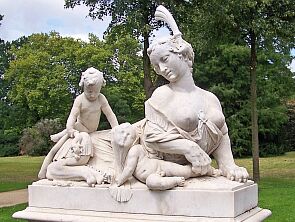
|
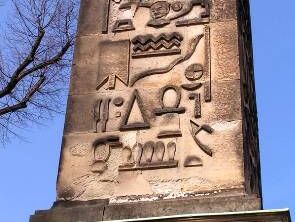
|
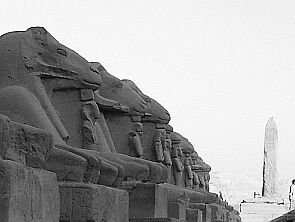
|
| Sphinx and Obelisk in Sanssouci Park, Potsdam | Sphinx and Obelisk in Karnak, Egypt |


 |
1748 - Sanssouci Park, inspired by Versailles, France
 Although King Frederick the Great and his famous landscaper von Knobelsdorff put a lot of their own ideas into the Park of Sanssouci, the resemblance with the famous gardens of Versailles is obvious. |

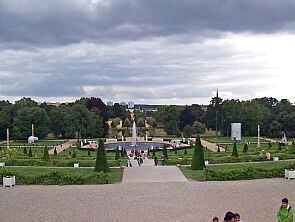
|
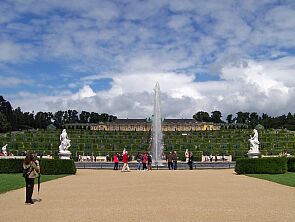
|
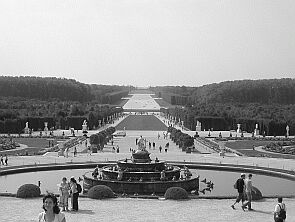
|
| Sanssouci Park, Potsdam | Chateau de Versailles, France |


 |
1755 - Nauen Gate, inspired by Inveraray Castle, Scotland
 Architect Johann Gottfried Büring designed this gate after a sketch made by Frederick the Great. The King got his idea from a much larger Scotish castle at famous Loch Lomond. |

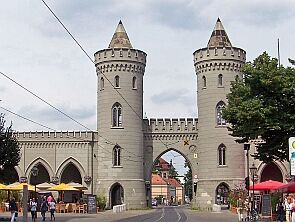
|
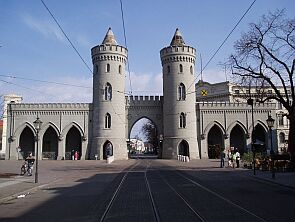
|
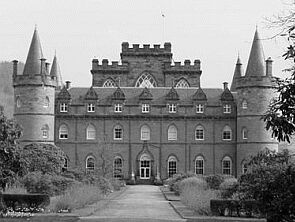
|
| Both sides of Potsdam's Nauen Gate | Inveraray Castle, Loch Lomond, Scotland |


 |
1763 - Chinese Pavillion, a temple built in the architectural style of Chinoiserie
 Chinoiserie is not "real" Chinese architecture but rather a European artistic style, combining Rokoko and Orinetal styles. Potsdam's Chinese Pavillion is worldwide one of the best examples of this style. |


|
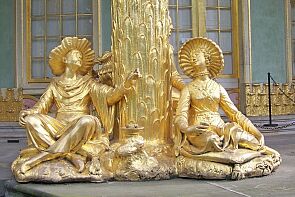
|
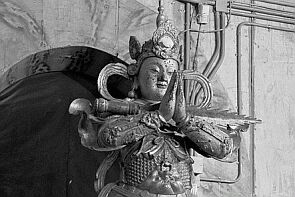
|
| Chinese Pavillion, Potsdam | Summer Palace, Beijing, China |


 |
1770 - Brandenburg Gate, a Triumphal Arch, designed after the
Arch of Constantine in Rome
 After Frederick the Great had won the Seven Years War and establishing Prussia as a new European super power, the otherwise modest King decided to turn the wooden gate at the west side of town into his very own Triumphal Arch, modeled after the Arch of Emperor Constantine in Rome. |

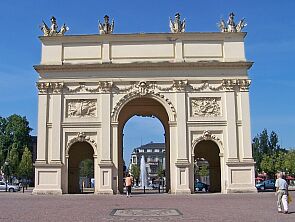
|
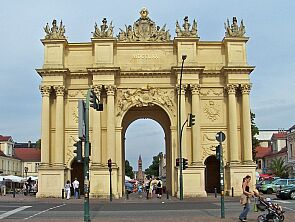
|
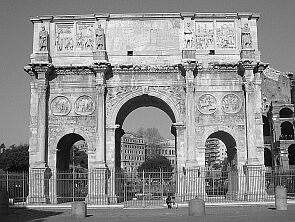
|
| Both sides of Potsdam's Brandenburg Gate | Arch of Constantine, Roman Empire |


 |
1827 - Alexandrovka, modeled after the village of Glasovo, near St. Petersburg, Russia
 Potsdam's russian colony was built as a tribute to Russian Tzar Alexander I. The houses, built in traditional Russian style were home to the members of a Russian Choir. |


|

|
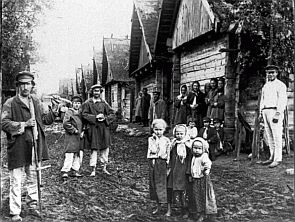
|
| Russian Colony, Potsdam | Old Russian Village |


 |
1829 - Alexander Nevky Church, built as a scale model for the Church of the Tithes, Kiev, Ukraine
 This Church was built by Russian Architect Wasily Stasov as a scale model for the much larger Church of the Tithes, which was erectet in Kiev in 1842. It is now the oldest example of the achitecture periode of Russian Revial and the oldest Russian-Orthodoxe Church in Western Europe. |


|
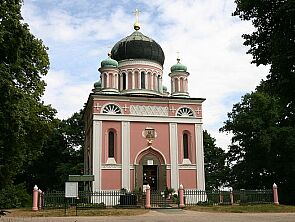
|
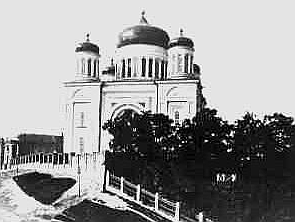
|
| Alexander Nevsky Church, Potsdam | Church of the Tithes, Kiev, Ukraine |


 |
1837 - Gate of Saint Nicholas Church, inspired by the Temple of Zeus, Olympia, Greece
 While today's St. Nicholas Church with its impressive dome resembles the Panthéon in Paris, the original design of 1837 looked a lot more like a Greek Temple. And since the gates to the Paris Pantheon are a replica of a Greek Temple anyway, we leave this as a rare example of Greek architecture in Potsdam. |

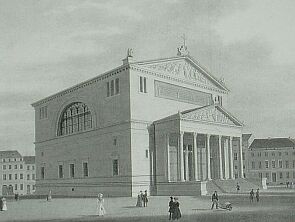
|
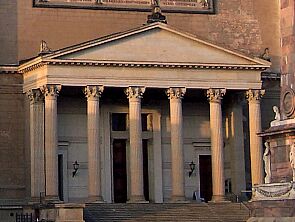
|
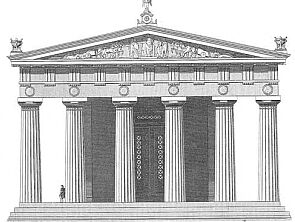
| ||||||||||||||||||||||||||||||||||||||||||||||||||||||||||||||||||||
|
St. Nicholas Church in 1837 (The dome wasn't added until 1859) |
Gates to St. Nicholas Church, Potsdam | Model of Zeus Temple, Olympia, Greece |


 |
1843 - Sanssouci Pump Station, modeled in the style of a Turkish Mosque
 In oder to deliver water to the fountains of Sanssouci Park, a pump station with a steam engine was needed. Since the steam engine required a tall chimney, which could best be disguised as a minaret, King Frederick William IV ordered architect Persius, to build the pump station "in the manner of a Turkish Mosque with a minaret as a chimney". It is not modeled after a particular mosque, but we found one that is similar. |

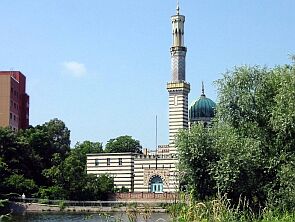
|
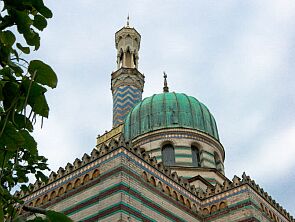
|
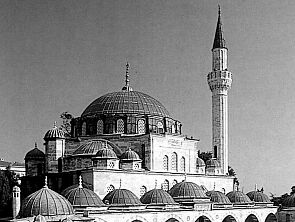
|
| Sansoucci Pump Station, Potsdam | Sokollu Mehmet Pasha Mosque, Istanbul, Turkey |


 |
1845 - Statue of the Resurrected Christ, copy of a statue in the
Church of Our Lady in Copenhagen, Denmark
 In 1821, Danish sculptor Bertel Thorvaldsen created a marble statue of the resurrected Jesus Christ for the Church of our Lady in the Danish capital Copenhagen. By many, this statue is considered the most perfect statue of Christ in the world and copies of it can be found all over the world, from the Temple Square in Salt Lake City to Legoland. One of the first copies was created for the Church of Peace in Potsdam. |

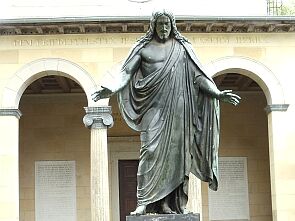
|
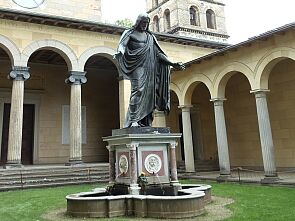
|
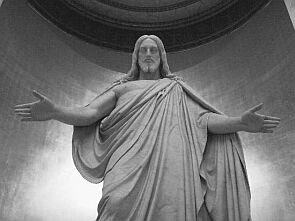
|
| Statue of the Resurrected Christ, Church of Peace, Potsdam | Much larger original in Copenhagen, Denmark |


 |
1849 - Babelsberg Castle, inspired by Windsor Castle, England
 In 1849, Prince William, the later German Emperor William I got his own summer residence, designed in the style of English Gothic, just like the famous - but much larger - Windsor Castle in Berkshere, England. |


|
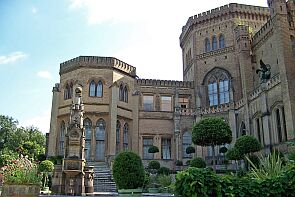
|
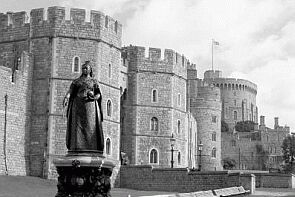
|
| Babelsberg Castle, Potsdam | Windsor Castle, Berkshere, United Kingdom |


 |
1852 - Pfingstberg Belvedere, an unfinished villa that was supposed to look like Villa Farnese in Caprarola, Italy
 Originally, King Frederick William IV, the "Romantic on the Thron" wanted a building similar to Villa Caprarola north of Rome, which he visited in 1828. But after five years, work came to a hold in 1852. The unfinished building turned out beautifully, even if it doesn't bear much resemblance with the original. |

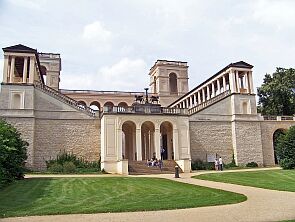
|
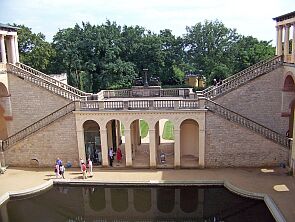
|
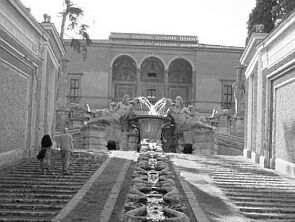
|
| Pfingstberg Belvedere, Potsdam | Villa Farnese, Caprarola, Italy |


 |
1859 - Saint Nicholas Church with Dome, inspired by The Pantheon, Paris, France
 In 1859, architect Schinkel's vision of a church with a dome, modeled after the Paris Panthéon was fulfilled. Until today, this is the most dominant building of Potsdam's Old Market Square. |

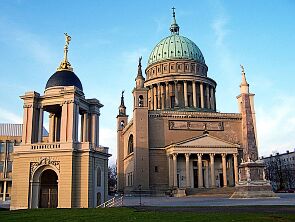
|
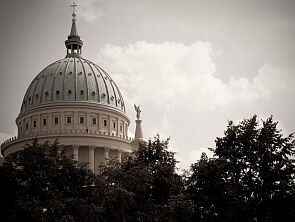
|
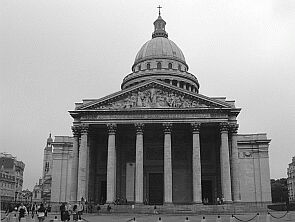
|
| St. Nicholas Church, Potsdam | Panthéon, Paris, France |


 |
1911 - General von Steuben Monument, copy of a monument at Valley Forge, Virginia
 Not really a piece of architecture, but with this gift from the US Congress to the German Emperor, the United States made it on Potsdam's map. The monument depicts Prussian born American General Friedrich von Steuben, inspecting the American Revolutionary Army. |

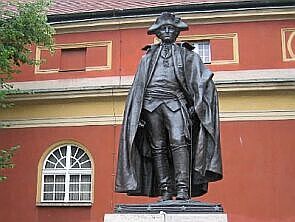
|
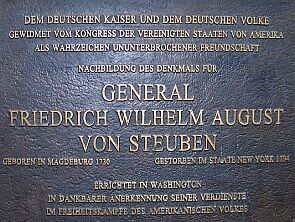
|
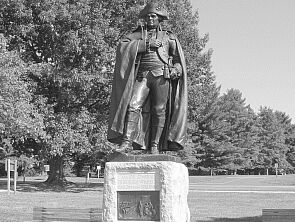
|
| General von Steuben Monument, Potsdam | General von Steuben Monument, Valley Forge, Virginia, USA |


 |
1917 - Cecilienhof Castle, built in the style of English Country Cottages
 Just one year before the end of German Monarchy, Potsdam's last castle was completed. It was designed to look like an English Tudor-Style Country House. The castle became famuos after 1945 as the place of the Potsdam Conference. |

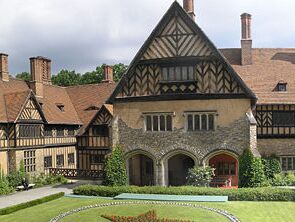
|
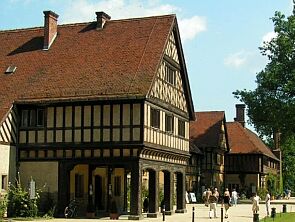
|
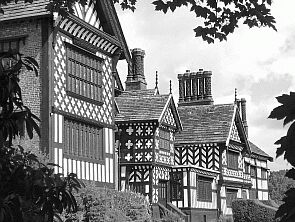
|
| Cecilienhof Castle, Potsdam | Bramall Hall, Manchester, England |


 |
1970 - City Library, a scary example of Socialist Realism
 During the Communist Years, Potsdam wasn't spared from Soviet-inspired architecture, called Socialist Realism. In the 1970s, these kind of buildings littered cityscapes anywhere from Berlin to Moscow and Beijing. |

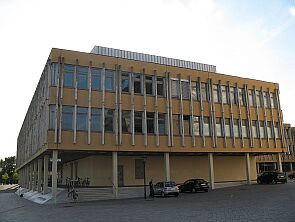
|

|
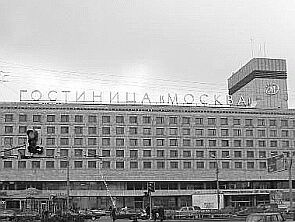
|
| City and State Library, Potsdam | Hotel Moskva, Moscow, Soviet Union |


|
|
2006 - Brandenburg State Theatre, inspired by the Opera House in Sydney, Australia
 This is the latest addition to Potsdam's internationaly inspired architecture, adding another continent to the map of inspirations. |

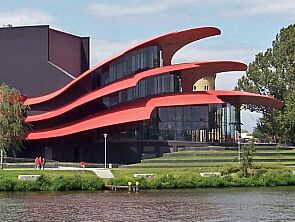
|

|
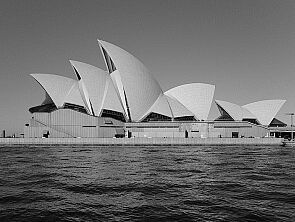
|
| State Theatre, Potsdam | Opera House, Sydney, Australia |



Back to Potsdam Page |

Back to Home Towns |

Back to Germany Page |
 Back to English Main Page |
 Back to Start Page |